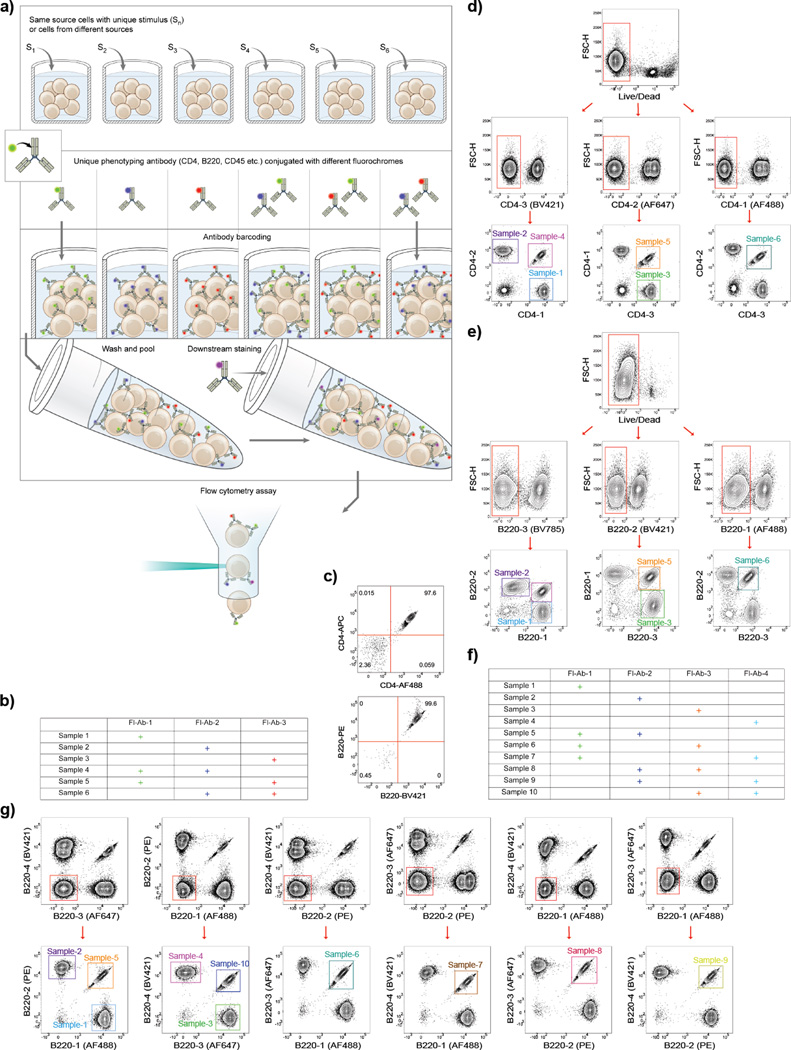Figure 1.
Ab-barcoding allows identification of T cells and B cells pooled from multiple samples. a) Key steps in barcoding cells using single- or double- stained combinations of three different Fl-Abs for flow cytometry are illustrated. b) Assignment of Fl-Abs to samples to generate six unique barcodes. c) Representative examples of uniformly double stained CD4+ T cells (top) and B cells (bottom) are shown. d–e) Stepwise gating strategy to identify individual populations T cells (d) and B cells (e) in a pool of cells containing six uniquely barcoded samples illustrated in (b) using anti-CD4-Fl-Abs for T cells and anti-B220-Fl-Abs for B cells. Gating steps prior to Live/Dead stage are as shown in (Supplementary Fig. 1). f–g) Representative example of barcoding using four different anti-B220-Fl-Abs in single- or double- stained combinations generating ten unique barcoding patterns as outlined in (f) and demonstrated in (g).

